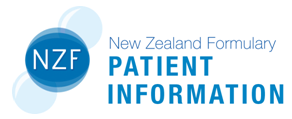What does it do?
Isoniazid is used to treat or prevent tuberculosis.
Before you start
- Tell your doctor if you have liver or kidney problems; or if you have ever had a seizure.
- Tell your doctor if you are pregnant, planning to become pregnant, or breastfeeding.
How should you take it?
Take isoniazid regularly as directed with a glass of water.
Take each dose on an empty stomach - one hour before or two hours after food.
Keep taking isoniazid until the course is finished, even if you start to feel better.
What if you forget a dose?
Take the missed dose as soon as possible. If it is close to the time for your next dose, skip the missed dose and carry on as normal. Do not take two doses at the same time. If you often forget to take isoniazid, your tuberculosis may not be fully treated.
Can you take other medicines?
Some medicines available without a prescription may react with isoniazid including:
- antacids (e.g. Mylanta®) - do not take these within two hours of taking isoniazid.
Tell your pharmacist or doctor about all medicines or treatments that you may be taking, including vitamins, herbal products or recreational drugs.
What side effects might you notice?
| Side Effects | Recommended action |
|---|---|
|
Symptoms of liver problems including: yellow skin or eyes, itching, dark urine, pale bowel motions, abdominal pain Numbness or tingling of the fingers or toes Dizziness, slurred speech, unsteadiness |
Tell your doctor immediately |
|
Nausea, stomach upset |
Tell your doctor if troublesome |
If you notice any other effects, discuss them with your doctor or pharmacist.
Other information:
- Limit alcohol intake while taking isoniazid. Alcohol may increase the risk of liver problems.
- Your doctor may prescribe pyridoxine (vitamin B6) to prevent tingling of the fingers or toes, which can sometimes be a side effect of isoniazid.
- Do not stop taking isoniazid without talking to your doctor first.
This leaflet contains important, but not all, information about this medicine.
Prepared by the MyMedicines Committee at Christchurch Hospital, Te Whatu Ora - Waitaha, New Zealand. March 2023
For more general information about this sheet and its contents, see: What does a My Medicines sheet cover?
Te Reo Māori
Te Reo Māori information sheets supported by Health Quality and Safety Commission New Zealand
Web links for this sheet in different formats
Click on buttons to copy web addresses for this leaflet:
If your browser does not automatically copy these links use its copy command instead.
About My Medicines
My Medicines Patient Information Leaflets (PILs) contain important, but not all, information about the medicines they describe.
For more information about the sheets, see: What does a My Medicines sheet cover?
My Medicines is developed by a team at Te Whatu Ora – Waitaha. Our team is made up of doctors, pharmacists, and a non-medical person to help us keep to plain language. We also discuss our information with specialist health professionals or groups when needed

